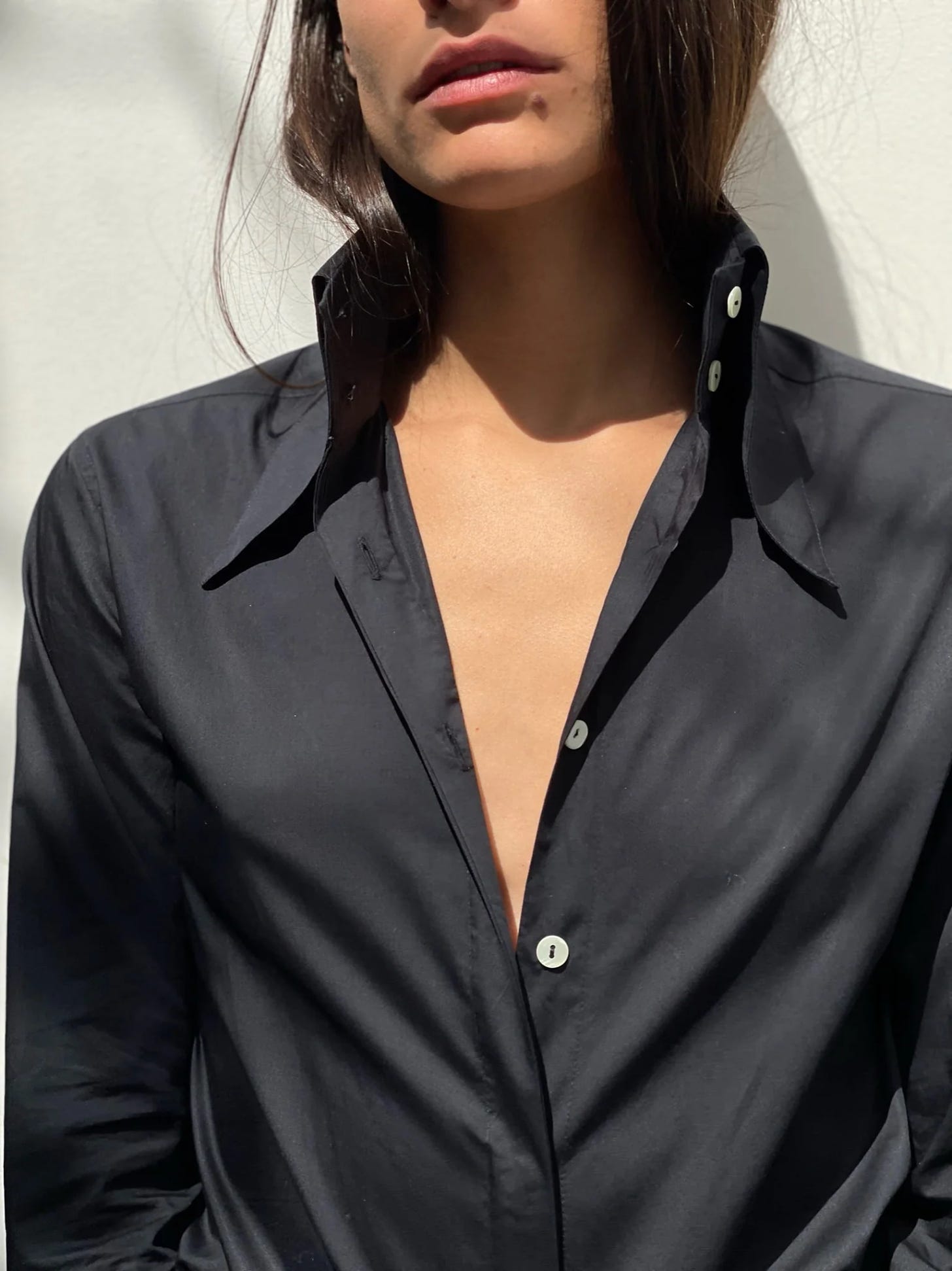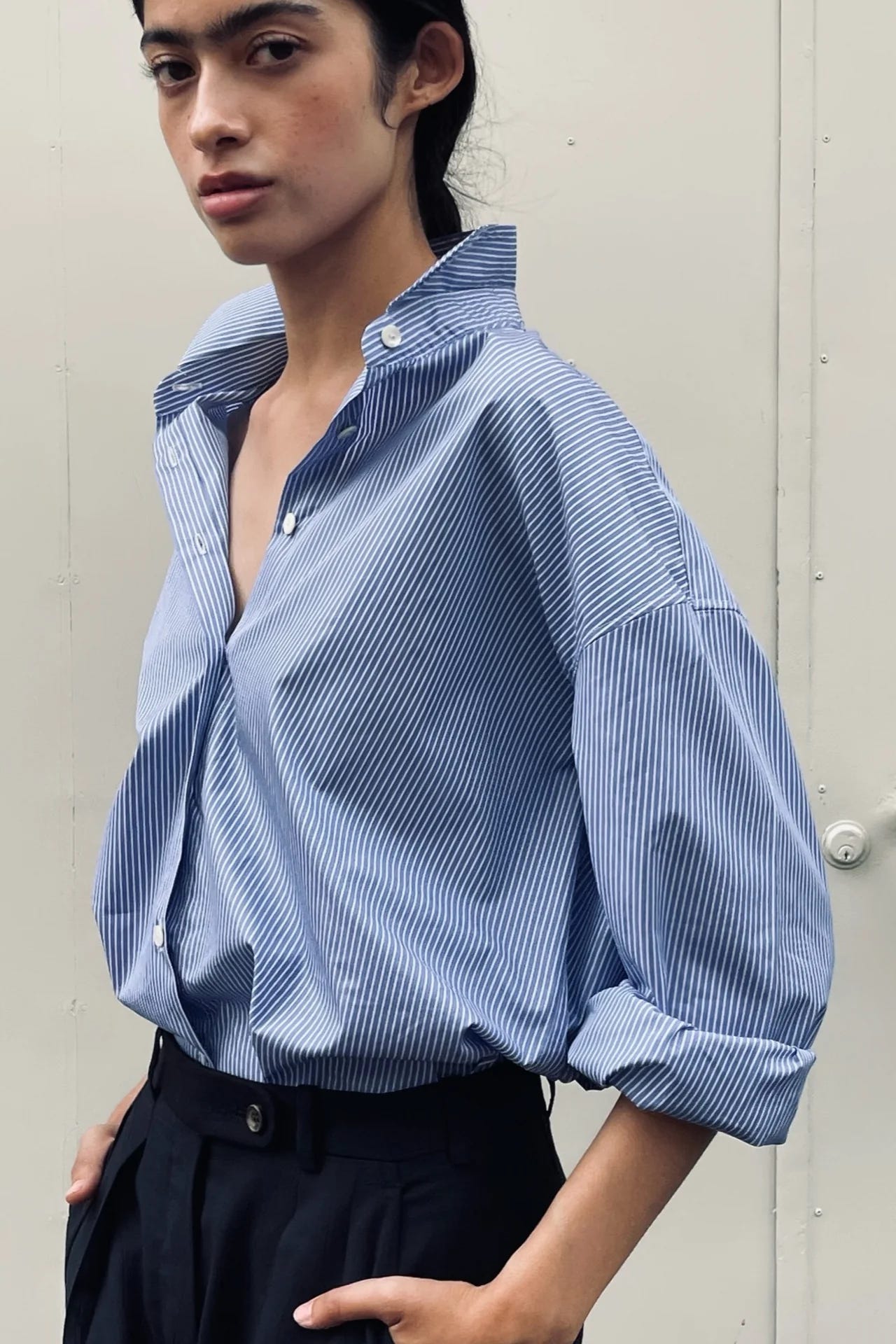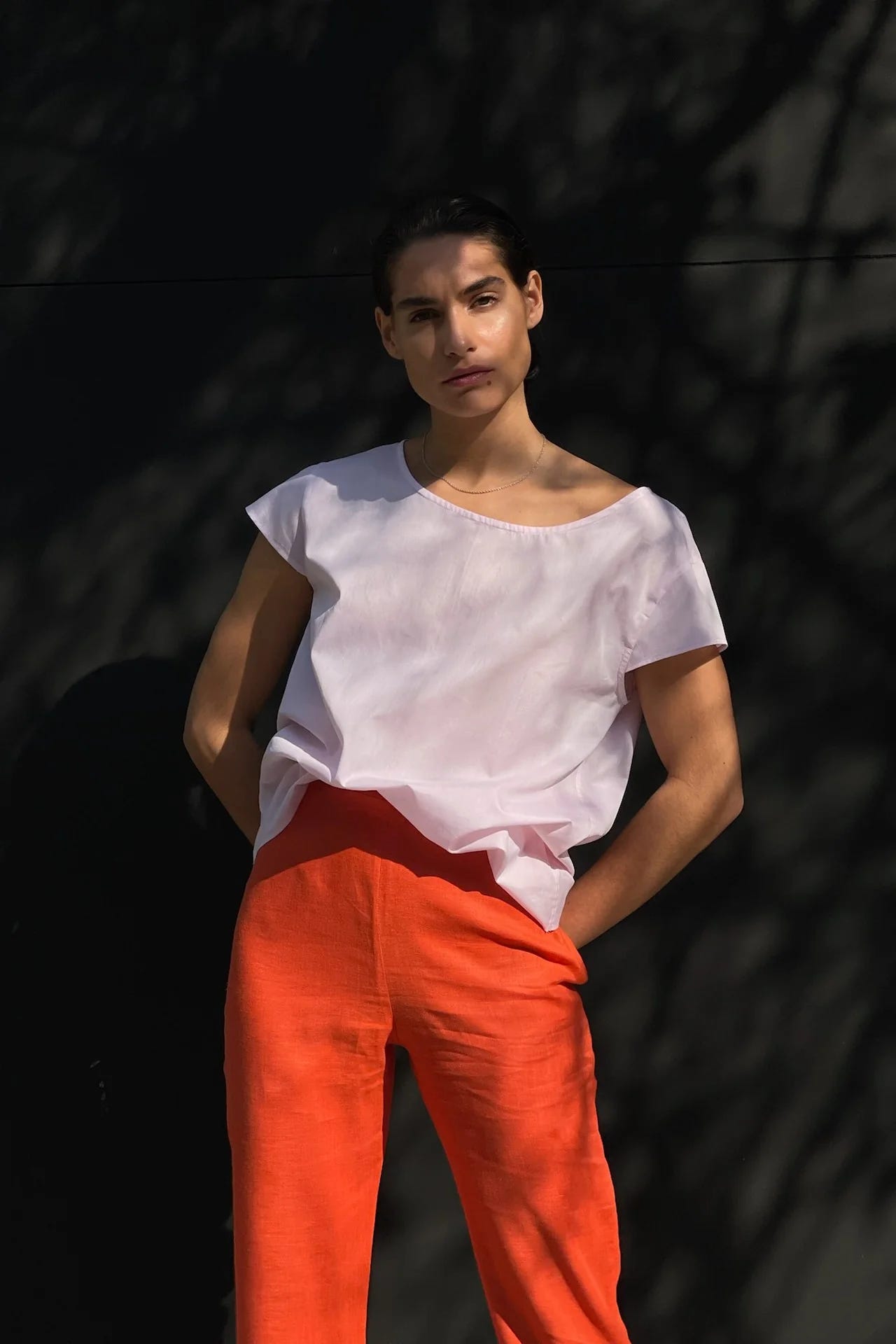

Discover more from All's Well by Nadine Zylberberg
From time to time, I’ll be devoting All’s Well to conversations with creative women who inspire me. This week, designer Olivia Villanti. Subscribe to get upcoming interviews and roundups.
When I first came across the Mexico-based brand Chava Studio, it felt like a breath of fresh air in the world of online shopping and endless scrolling. Here, a simple, elegant studio of (mostly) women’s shirts, made to order, with a history and craftsmanship to back it. (And a new Madewell collaboration using deadstock fabrics, too!) Just three pages of products, all carefully tailored—a crochet collar here, a removable cuff there.
Olivia Villanti started Chava in 2020, and the brand’s pieces are all designed and developed in partnership with Gilly e Hijos, her husband’s family’s decades-old fabric business. I reached out to Olivia to discuss how she started the brand out of her in-laws’ family studio and what growth has looked like. Below is from our conversation.
Take us through your career and what led you to start Chava.
I grew up in the Hudson Valley and studied dance at Hampshire College. After a few years of the dance lifestyle grind in New York, I took a part-time job at a fashion PR firm, and found myself really interested in the designers we were working with and the stories we were communicating. A position opened in the online fashion department at Lucky magazine, and that’s how I started in a real way in the fashion industry. That took me to InStyle. Then, I started freelance writing, working for brands like J. Crew, where they offered me a full-time position. I ended up moving over to Madewell and working as their editorial director, which was my last full-time job.
In 2019, I moved to Mexico, where my husband is from. I had my son, and I was working as a consultant for smaller fashion brands, but I wasn’t sure about what I wanted to do. Everything felt very confusing at that moment. My in-laws have had a fabric importation business since my husband’s grandfather immigrated to Mexico after World War II from France. Their niche here was importing really fine European textiles that were specifically made for men’s shirting and suiting; types of cottons and wools that are very difficult to find here in Mexico. I’d never felt cottons like that before. I understood for the first time why something might be really expensive.
They employed a seamstress who was also a pattern maker, and I had some ideas for shirts that I had wanted to exist. When I got the samples back, my mind had completely changed around clothing. I was like, “These are two shirts that I will never get rid of.” They feel so special. The fabric feels beautiful. You can tell they were made by hand.
After those two samples, I thought: This is what I could do. I could start a made-to-order business of women’s shirts that are rooted in the fundamentals of men’s tailoring, but that feel like they’re made with a design sensibility that’s more feminine, more modern.
What’s different about Chava?
I love special design details that feel subtle. Our tuxedo shirt has this bib with buttons that are hidden, and there’s no seam. To me, that’s something that you notice, but it’s also not distracting. I believe in keeping things classic and traditional, just finding ways to infuse a little bit of emotionality into them.
Was there a steep learning curve?
At Madewell, I had to sit in design meetings, I had to sit in merchandising meetings, I had to sit in discussions about line buys. It was a crash course in fashion as a business and I’m so grateful I had that opportunity. Now, starting Chava, I feel like I subconsciously have all of this information that I hadn’t even realized I was soaking up about margins and how to price things and how to seasonably work within a calendar.
Still, there’s been so much learning. I came to Mexico thinking that I was going to take a timeout and regroup—and I’m working more than I’ve ever worked in my life. Having your own business sounds really attractive. I look at pictures of the dinner that we had in the New York Times that look gorgeous. Parts of it certainly are, but the majority of it is so, so hard—and I’ve had a lot of tools available to me that have made it easier than it could be for many people starting out.
I have been learning about interlinings, fabric qualities, drape, pattern grading, cutting patterns, collar sizes, shapes of collars, buttons, quality control, logistics, shipping... Having a small business, you’re constantly problem-solving. The second you solve for one problem, a new problem arrives. It’s exciting, but I never would want to glamorize how hard it is.
So much of my day is reactive: I’m putting in orders, I’m reviewing orders, I’m creating shipping labels. Strategic thinking is what happens at night or when I’m starting to unwind. When we first started doing pants, I would fall asleep thinking about how we could figure out how to close that pant so it was clean in the front, but also had enough give at the waist. Thinking about these things for hours.
From the beginning, I wanted this brand to prioritize really high-quality product and really great conditions for the people that work for us. Up until now, it’s been just me.
How has it been working with family throughout this process?
My husband’s uncle, Bruno, owns the studio. He’s one of those people who is a natural-born teacher. You’re not going to get a lot of coddling, but he gets excited by seeing ideas come to life. In the beginning, he was very supportive and gave me a lot of access to the studio, let me talk directly to Yolanda, work on patterns with her, work on grading with her. Every design that we do is an intense back and forth between the two of us.
I definitely have this feeling of responsibility, knowing that this was my husband’s grandfather’s business. This is my husband’s family. I feel like I’m always trying to make the brand something they’re excited about and proud of.
What does the idea of “slow fashion” mean to you?
Slow fashion for me means prioritizing product and people and process over profits. It’s a return to fashion’s roots. We’re working with small tailors that have been operating the way that they have—mostly made-to-measure, all made-to-order—for decades. It’s a return to buying special pieces that you have in your closet that feel luxurious, that make you feel good.
Where did the name Chava come from?
When I was coming up with a name for the line, I wanted to capture the idea of something that felt really feminine and not stuffy. “Chava” in Mexico is a slang word for a girl. It’s like the feminine version of “dude.” It feels casual, it feels comfortable. I felt like it really captured the essence of what we’re trying to do. It’s rooted in femininity, but it has a kind of casualness to it, and it also keeps some of the tradition alive.
Well said, Olivia!












